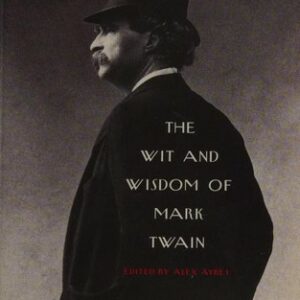The Cure for Drowning
$24.95
| Title | Range | Discount |
|---|---|---|
| Trade Discount | 5 + | 25% |
- Description
- Additional information
Description
Evocative, magical and luminously written, The Cure for Drowning is not only a brilliant, boundary-pushing love story but a Canadian historical novel that boldly centres queer and non-binary characters in unprecedented ways.
Born Kathleen to an immigrant Irish farming family in southern Ontario, Kit McNair has been a troublesome changeling since, at ten, they fell through the river ice and drowned—only to be nursed back to life by their mother’s Celtic magic. A daredevil in boy’s clothes, Kit chafes at every aspect of a farmgirl’s life, driving that same mother to distraction with worry about where Kit will ever fit in. When Rebekah Kromer, an elegant German-Canadian doctor’s daughter, moves to town with her parents in April 1939, Rebekah has no doubt as to who 19-year-old Kit is. Soon she and Kit, and Kit’s older brother, Landon, are drawn tight in a love triangle that will tear them and their families apart, and send each of them off on a separate path to war.
Landon signs up for the Navy. Kit, now known as Christopher, joins the Royal Air Force, becoming a bomber navigator relied on for his luck and courage. Rebekah serves with naval intelligence in Halifax, until one more collision with Landon changes the course of her life and draws her back to the McNair farm—a place where she’d once known love. Fallen on even harder times, the McNairs welcome all the help she is able to give, and she believes she has found peace at last. Until, with the war over, Kit and Landon return home.
Told in the vivid, unforgettable voices of Kit and Rebekah, The Cure for Drowning is a powerfully engrossing novel that imagines a history that is truer than true.“Brimming with magic and historical detail, The Cure for Drowning is a rare wonder of a book. A profound exploration of lives entwined, it is, at once, a page-turning read and a richly imagined study of love—the kind that overcomes and endures, and ultimately transforms us into who we’re meant to be.” —Ami McKay, bestselling author of The Birth House, The Virgin Cure and The Witches of New York
“Loghan Paylor takes us on a journey of history, the complexity of family, both the ones we’re born into and the ones we choose, and the intoxication of queer love. This novel is deftly written and propulsive; the fantastical as important in detail as everything else. I’ll be thinking about this novel for years to come.” —Jessica Johns, author of Bad Cree
“The Cure for Drowning is a captivating and utterly engrossing work of historical fiction—intricately crafted, epic in scope and yet astonishingly intimate. In riveting prose, infused throughout with magic, Paylor renders characters who are painfully, exquisitely human; who traverse landscapes as diverse as a rural family farm in Ontario, jazz clubs in Halifax and the airfields of Europe during World War II, and yet who feel as familiar as neighbours. Evocative of the works of Ann-Marie MacDonald and Alice Munro, The Cure for Drowning has all the makings of a modern classic; a debut that is as grounded as it is ground-breaking, as tender as it is thrilling. To anyone who has ever wondered what makes a Great Canadian Novel, Paylor has delivered the answer.” —Jasmine Sealy, author of The Island of Forgetting, winner of the Amazon First Novel Award
“Loghan Paylor’s lush scenes and exquisite sentences illuminate an important aspect of society largely invisible in historical fiction. Kit and Rebekah’s swirling life paths portray queer and trans people as integral parts of our collective history, even while they are forced to remain hidden. Yearning for love, acceptance and home propel this vivid narrative, in which where families can be more cruel than strangers, silence can be the loudest form of allyship, and a little bit of turquoise magic helps us realize ‘they knew who they were all along.’” —Tara McGuire, author of Holden, After and Before
“Loghan Paylor’s debut novel The Cure for Drowning is a stirring page-turner of a historical love story that delves into the meaning of family—both inherited and created.” —Vancouver Sun
LOGHAN PAYLOR is a queer, trans author who lives in Abbotsford, British Columbia. Their short fiction and essays have previously appeared in Room and Prairie Fire, among others. Paylor has a Master’s in creative writing from the University of British Columbia, and a day job as a professional geek. The Cure for Drowning is their first novel.JANUARY 1931
It was a bitter afternoon, during one of the worst winters the province had ever seen. A ten-year-old girl walked into the forest with her two brothers and didn’t come out again.
The youngest, Jep, remembered they were looking for cranberries, drawn over the snowy fields and across the river into the wetlands and forest on the other side. He blamed the oldest, Landon, for getting them lost. Landon always reminded Jep that there were no cranberries to be found in January. That they had been seeking beech nuts, buried deep under the snow. Six-year-old Jep had been told to stay home but followed his siblings anyway.
The three of them had trod a large, meandering loop of the forest without finding a single cranberry or beechnut. Kathleen wanted to press on, up into the pine forest on the ridge, but it was too far for the smallest feet in their party, so Landon turned them homeward, unsure of his way among the snow-buried trails. After, he would claim it was Jep’s fault they ended up at that part of the river at all.
Neither disputes that it was a late winter afternoon, with blank, heavy clouds overhead. Three children walked among evergreens so dark they seemed black, the snowscape slowly turning blue-grey as the light slanted. Twelve-year-old Landon in the lead, his hat frosted like a birthday cake. Kathleen, ten, in the middle, glaring at the back of his head. Behind them, jumping from one boot hollow to the next, came Jep, bundled in his oversized coat and scarf. Unseen eyes watched their progress with silent, patient interest.
They emerged from the woods on the ridge that swept up from the river and stopped. They could see the farm where it lay a few miles ahead, skirted on three sides by fields marked with fletchings of trees and fences. The river traced the foot of the ridge for several miles, then ran down to join the Grand River and finally empty into Lake Erie.
Kathleen started whistling. A long gust of wind shook the branches of the trees behind them, the evergreens adding their hissing chorus, until the children were surrounded by the sounds of rushing water, the creak and groan of branches rubbing together.
”Stop that,” Landon snapped. “You’ll call them up.”
”No, I won’t,” Kathleen said, but she fell silent and tucked her face back into her scarf. The wind died away. Sparkling lights flickered at the edge of their vision, dancing along the snow. A trick of the fading winter light, the children thought.
Below their feet, the ridge plunged straight down to the bank for half a mile in either direction, cut by a narrow gully that was a creek in warmer seasons. The downed ash tree they had used to cross the water hours earlier lay several miles northwest. It would be dark by the time they reached it again. To the left, the river was wider and deeper, the ice hidden under a blanket of pristine snow. To the right, it narrowed and broke into shallow rapids, the current moving too quickly to be caught by the frost.
”We’ll cross there,” Landon said, pointing to a place just above the rapids where the ice was solid and impressions of animal tracks marred the snow. Without waiting for a reply, he plunged down, breaking a path for the others to follow.
When they reached the bank, Landon stepped out first, sliding his boots one at a time through the snow. Kathleen took Jep’s hand and towed him along in her wake. To their right, the ice fell away, revealing the rushing, blue-black water of the rapids. As Landon pulled ahead, moving quickly towards the opposite bank, Jep tugged free of Kathleen and hurried after him.
Kathleen placed her feet hesitantly, arms windmilling for balance when her boot slid on the hidden ice. When the boys reached the other side, they waited for their sister impatiently, cold and hungry and eager to be home. Landon tucked in Jep’s scarf, brushed the snow from his hat. Darkness rushed up the valley, the very last of the light dying in the northwest. Purple-blue shadows slithered across the snow to lick their boots.
”Kath, come on!” Landon called. But Kathleen had stopped in the middle of the river, staring at the gap in the ice where the rapids rushed. As they watched, she took two steps towards the open water. As though she were hypnotized, Jep would say later.
”Kitty?” Jep started towards the river’s edge, but Landon grabbed the back of his coat.
She took another step and paused, her head cocked, eyes on the open water. “Can’t you hear it?” Kathleen’s voice was barely a whisper above the wind over snow. “Someone’s calling me.”
”That was us,” Landon yelled.
”No, there’s a light, somewhere under . . .” She shuffled a few more steps. The ice groaned. Landon shoved Jep farther up the bank, telling him to stay put, and started towards his sister.
He remembered later that her face was lit with a faint green-blue glow. Jep claimed that the footprints they’d made on the ice also shone with the same light, like a reflection of the dusk sky. Except the clouds hung low and there was no light anywhere.
Kathleen took another step towards the water, her eyes following something under the ice.
”No!” Landon’s voice cut through the darkness. “Look at me, Kitty. At me.”
His sister startled, as though just realizing where she was. The ice creaked beneath the children’s feet. On the bank, Jep started to cry.
”Don’t move, Kitty,” Landon said. “Stay exactly as you are.” He began edging forward. Snot dripped from Kathleen’s nose. She wiped it with her mitten. A few more steps and he would be within reach.
A blue-green light under the ice drifted towards the centre of the river. Kathleen followed it with her eyes, and then turned, lifting a boot.
A sharp crack. Landon’s shout. The ice broke and Kathleen plunged into cold black water.CA
Additional information
| Weight | 14.6 oz |
|---|---|
| Dimensions | 1.0000 × 5.7000 × 8.3000 in |
| Imprint | |
| Format | |
| ISBN-13 | |
| Author | |
| Audience | |
| BISAC | |
| Subjects | FIC014050, WWII books, fiction books, historical novels, historical fiction books, historical fiction novels, lgbt fiction, transgender books, magical realism books, ww2 historical fiction, ontario, world war 2 historical fiction, wwii historical fiction, world war 2 fiction, trans books, canadian authors, transgender fiction, RAF, trans fiction, WW2, historical, magic, trans, nonbinary, LGBTQ, fiction, lgbt, WWII, world war 2, world war ii, transgender, historical fiction, non-binary, FIC061000, Royal Air Force, magical realism, lgbt books |











